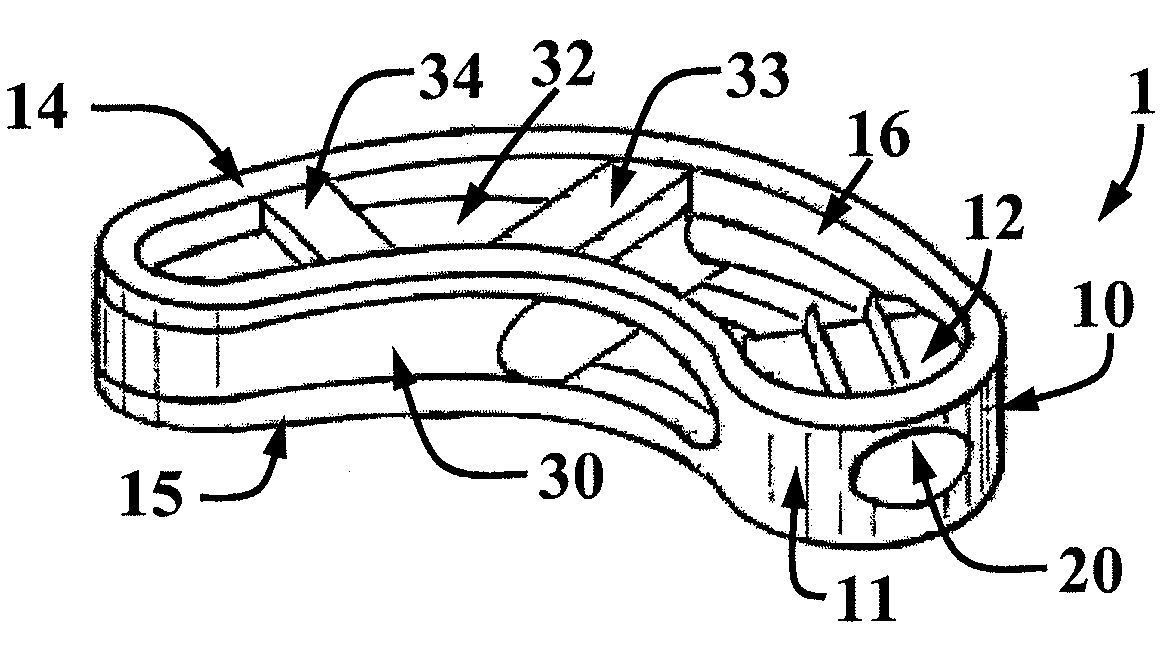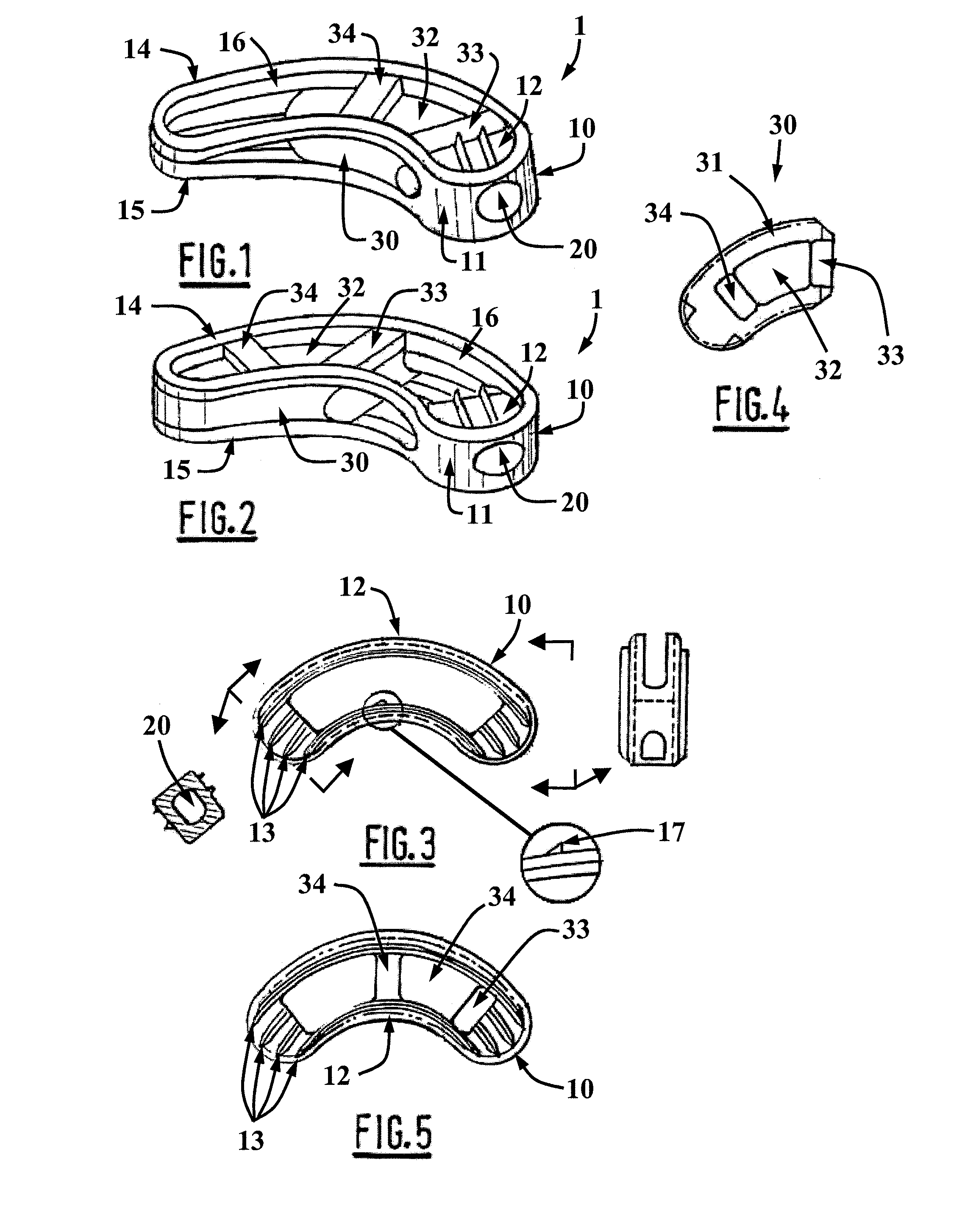Expandable cage for vertebral surgery involving lumbar intersomatic fusion by a transforaminal posterior approach
a technology of intersomatic fusion and expandable cage, which is applied in the field of implants, can solve the problems of difficult or even impossible to insert bone graft material using such a device, the implant is no longer accessible, and the restricted space of the implant 90°,
- Summary
- Abstract
- Description
- Claims
- Application Information
AI Technical Summary
Benefits of technology
Problems solved by technology
Method used
Image
Examples
Embodiment Construction
[0025]Reference will now be made in detail to non-limiting embodiments of the present invention by way of reference to the accompanying drawings, wherein like reference numerals refer to like parts, components and structures.
[0026]With reference to FIGS. 1 to 5, the surgical implant 1 is of the intersomatic cage type for the fusion of vertebral bodies using a transforaminal approach. The implant 1 is made of a biocompatible elastic material. The implant is advantageously made of an implantable-grade polyetheretherketone (PEEK) polymer. Alternatively, it may be made of a metal such as titanium or a bioresorbable material such as a poly-L-lactic (PLLA) material.
[0027]In general, the implant 1 is comprised of a body 10 in the form of a bean designed to be implanted between the plates of two adjacent vertebrae, one expanding element 30 forming a core therein designed to be filled with bone graft material that slides inside of the body 10. The expanding element 30 is designed to slide al...
PUM
| Property | Measurement | Unit |
|---|---|---|
| distance | aaaaa | aaaaa |
| height | aaaaa | aaaaa |
| width | aaaaa | aaaaa |
Abstract
Description
Claims
Application Information
 Login to View More
Login to View More - R&D
- Intellectual Property
- Life Sciences
- Materials
- Tech Scout
- Unparalleled Data Quality
- Higher Quality Content
- 60% Fewer Hallucinations
Browse by: Latest US Patents, China's latest patents, Technical Efficacy Thesaurus, Application Domain, Technology Topic, Popular Technical Reports.
© 2025 PatSnap. All rights reserved.Legal|Privacy policy|Modern Slavery Act Transparency Statement|Sitemap|About US| Contact US: help@patsnap.com


